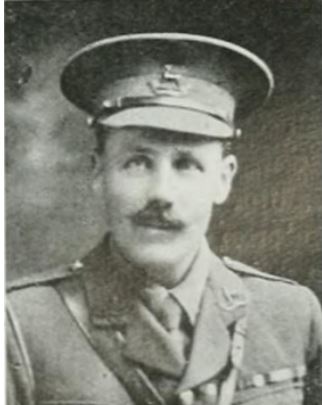1st Battalion, Royal Warwickshire Regiment

At the start of the Great War, William Charles Christie resided at Chesterton, Cirencester. Married with a young son., he was born in Cardiff on 13 December 1872, the son of a ship owner. William was educated at Rugby School and Sandhurst and commissioned into the Royal Warwickshire Regiment in 1893. He was an accomplished long distance runner and rode, as an amateur jockey, in National Hunt events.
Promotion to Lieutenant followed in 1898 and to Captain two years later. In 1902, just short of 30 years old, he was rewarded for gallantry shown in the Sudan (1898) and the South African War (1899-1902), when he was twice Mentioned in Despatches, with the rank of Brevet Major – becoming the youngest Major in the British Army. The rank was made substantive in 1912.
Prior to the Great War, William undertook General Staff duties: from 1904-1907 he was Adjutant of the Militia and was a military instructor to the Officer Training Corps, where he acted as adjutant to the contingents from the Universities of Birmingham and Bristol and the Royal Agricultural College, Cirencester
At the start of the Great War, he rejoined the 1st Battalion, Royal Warwickshire Regiment and landed in France on 22 August 1914. The battalion, part of 10th Brigade, 4 Division, was in action three days later. He survived the Retreat from Mons and the Battles of the Marne and the Aisne, once again being twice Mentioned in Despatches for ‘gallant and distinguished service in the field’.
On 13 October 1914 the Germans were holding the high ground along a ridge in front of Meteren, south of Ypres. The 1st Royal Warwicks were tasked with the capture of Meteren and Major Christie was leading ‘D’ Company. Once the outskirts of the village had been gained ‘C’ and ‘D’ Companies advanced and took several trenches but suffered severely. They were not relieved until 8pm that evening due to heavy enemy fire. Reportedly Major Christie led his company forward showing, in the words of a brother officer, ‘absolutely no sense of fear’. He was reportedly cut down by six bullets.
His body was recovered and he now lies in Meteren Military Cemetery. He is commemorated on the Cirencester War Memorial, the Roll of Honour inside Cirencester Memorial Centre and the War Memorial at Rugby School.
A brother officer from the 1st Royal Warwicks who was also wounded that day but survived being shot through the lung by a sniper, was Lieutenant Bernard Law Montgomery, who went on to greater things in a subsequent conflict.
